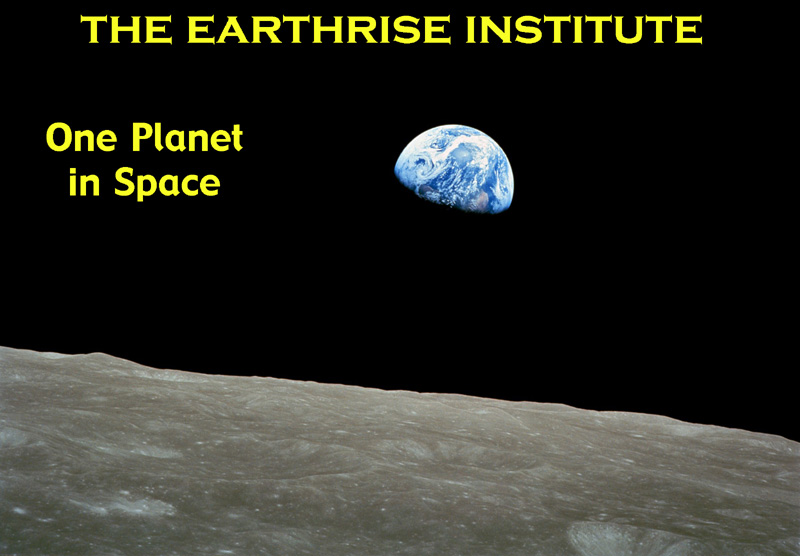
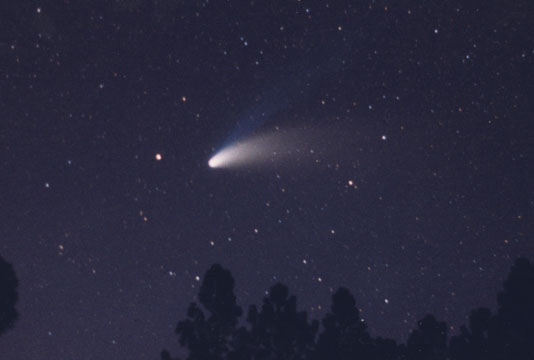
(posted October 15, 2018)
(modified October 31, 2018)
That pivotal event in the early days of my career involves an asteroid that was discovered as long ago as August 1898 by Gustav Witt at the Berlin Observatory (and independently the same night by Auguste Charlois at the Nice Observatory in France). While every one of the 400+ known asteroids at that time orbited within the main "asteroid belt" between Mars and Jupiter, this new discovery surprised everyone by not only crossing within the orbit of Mars but actually coming quite close to Earth on occasion -- indeed, it had passed only 0.152 AU (14.2 million miles, or 22.8 million km) from Earth in January 1894, 4 1/2 years before its discovery. The newly discovered asteroid was soon named Eros, after the Greek god of love; it orbits the sun every 1.76 years (21 months) in a moderately elongated orbit (eccentricity 0.223) that brings it to 1.133 AU from the sun at perihelion and takes it out to 1.783 AU -- somewhat beyond the orbit of Mars -- at aphelion. Physical studies indicate it is quite elongated (21 miles by 7 miles by 7 miles, or 34 km by 11 km by 11 km) and rotates in 5.3 hours.
Eros made its next close approach to Earth in January 1931, when it passed 0.174 AU (16.2 million miles, or 26.1 million km) from our home planet. Among the various investigations that were conducted around that time were parallax studies which helped define the exact size of an Astronomical Unit (AU) that in turn helped put the distance scale of the solar system on a firm footing. These measurements set the standard for these determinations until radar- and spacecraft-based methods superseded them in the 1960s.
In January 1975 Eros passed 0.151 AU (14.1 million miles, or 22.6 million km) from Earth, the closest approach it has made to our home planet since its discovery. At that time I was 16 years old, and in my Junior year (11th Grade) in high school. I had acquired my first telescope (a 4.5-inch, or 11.4-cm, reflector) five years earlier and had been actively observing the night sky ever since, including several comets (my lifetime comet tally being 14 at the time). I observed Eros on several occasions during its encounter with Earth, and it was as bright as 7th magnitude and easily visible with binoculars.
But I did more than just "observe" Eros during that encounter with Earth. In what I now consider to be my "breakout" astronomical study, and with the aid and mentorship of a local amateur astronomer, Phil Simpson* (at that time a U.S. Air Force officer stationed at the nearby Holloman Air Force Base) who in turn helped me gain access to the 12.5-inch (32 cm) reflector owned by the local school system, I carried out a full-blown investigation of Eros as a Science Fair project. During the course of this project I carried out a series of continuous brightness measurements over two nights to determine Eros' rotation period, calculated its brightness parameters (including its geometric albedo) and its average orbital velocity as well as its velocities at perihelion and aphelion, and even took a stab at predicting the path of an occultation it would make of the star Kappa Geminorum.
To my rather delighted surprise, my project was warmly received by the various judges throughout the Science Fair program, and I won First Place in the Earth and Space Science Division at the Local, Regional, and State Science Fairs (as well as various other awards). From the perspective of my future career, an even more important event took place at the Regional Science Fair that was held at the campus of New Mexico State University in Las Cruces, where one of the judges was Dr. Herb Beebe, at that time the Head of the Astronomy Department at the University. After introducing himself to me, Dr. Beebe and I had a long and involved discussion at the Fair, and that initial meeting turned into a long-lasting friendship. That friendship played a non-trivial role in my decision over a decade later to enter graduate school at NMSU, where I would eventually earn my Ph.D. in Astronomy in 1992. Although Dr. Beebe formally retired during my time as a graduate student, he stayed on as Professor Emeritus, and served on my doctoral committee -- and I remember his commenting after my defense about the long road I had traveled since high school.
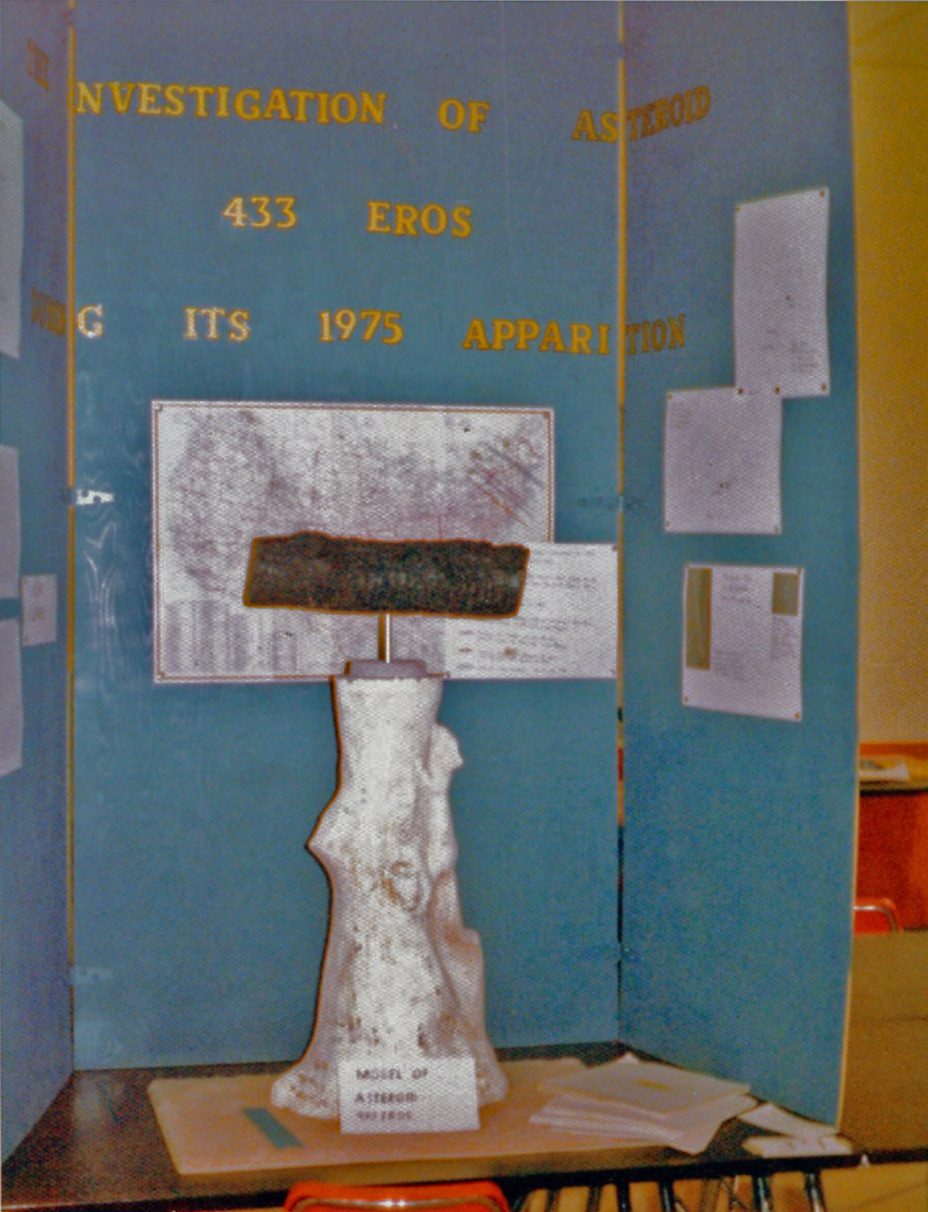
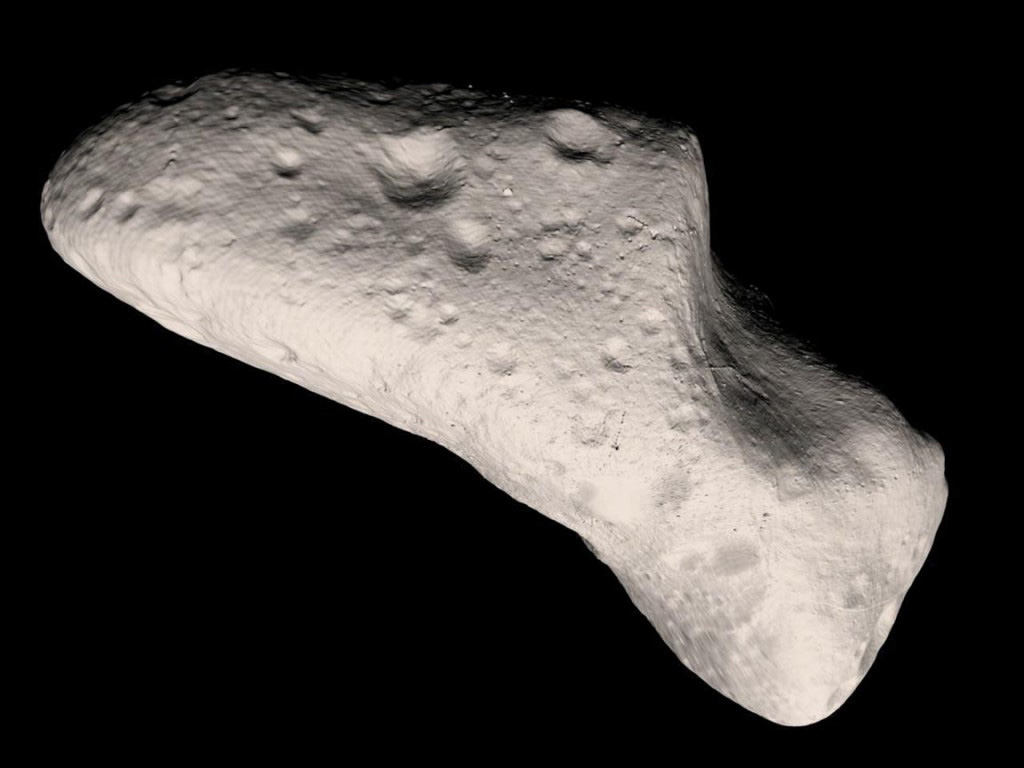
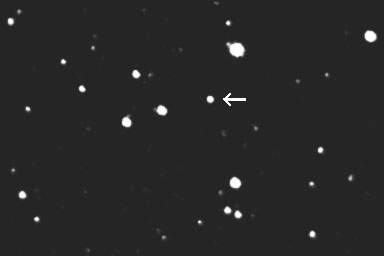
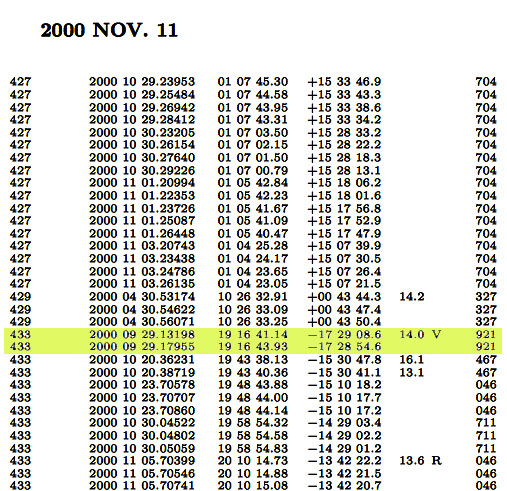
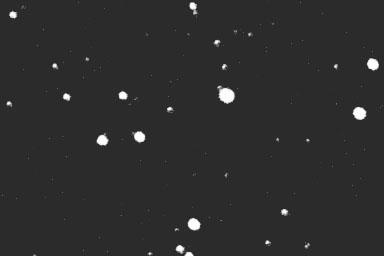
I continued the astrometric program for several more years, and among my accomplishments with it were confirmations of a couple of comet discoveries, and some measurements of Comet 81P/Wild 2 that were crucial in navigating the Stardust mission to its encounter with that object in early 2004. (One of the images I obtained of that comet when it was passing by the Crab Nebula M1 was featured on the homepage of the Stardust web site for a while.) The donated telescopes are still functional (although in need of some minor repairs) but the cameras are now outdated; meanwhile, my funding ran out (and FINDS no longer exists as an institution). At the same time, my focus turned more towards the outreach and bridge-building aspects of Earthrise, and with all of this combined I terminated the astrometric program some years ago. My life and career during the intervening years have been "interesting" in a number of ways, and I have recounted some of the happenings and the activities I have been involved in elsewhere on this web site.
Just like everything else in the solar system, meanwhile, Eros has continued its regular orbits around the sun, and in January 2012 it passed 0.179 AU (16.6 million miles, or 26.7 million km) from Earth. I observed it visually on a handful of occasions then as it reached close to 8th magnitude, but did not perform any detailed studies of it otherwise.
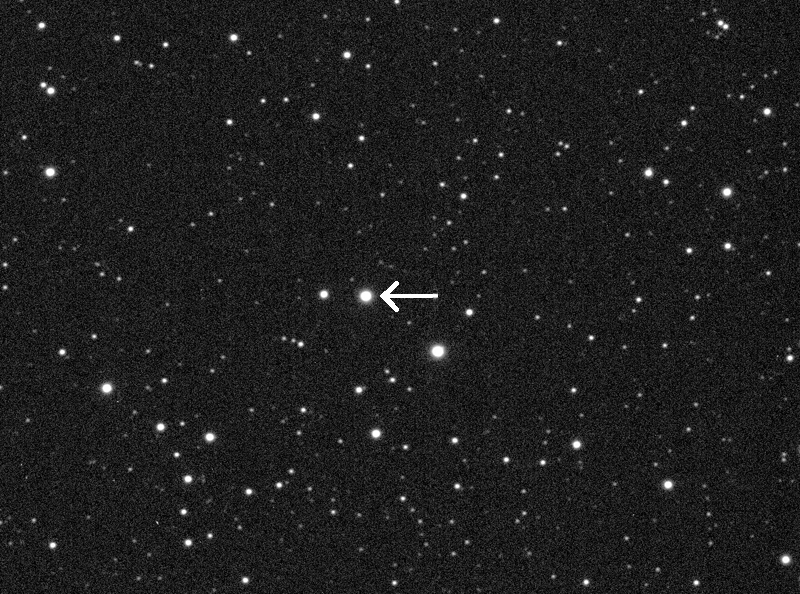
It's worth mentioning that it will be a long time before Eros comes anywhere near this close again; indeed, it doesn't even approach to within 0.35 AU of Earth until 2049. It doesn't come closer to Earth than the current approach until seven years after that, when in January 2056 Eros passes just 0.150 AU (13.9 million miles, or 22.4 million km) from Earth, marginally closer than it approached in 1975. I would be 97 years old at the time, and I remember pointing this out to some of my science-minded friends back when I was in high school; one of them joked that I could do another Science Fair project at that time . . . Well, we'll see about that . . . but, perhaps some of the students who might be observing Eros this time around will be part of an expedition to that object then, and perhaps will have made contributions toward building a better world that will be worthy of such an endeavor.
*(ADDED OCTOBER 31, 2018): I have just recently learned that Phil Simpson, who mentored me on my high school Science Fair project on Eros -- and who, in fact, initially suggested that studying Eros would be a worthwhile project for me to pursue in the first place -- passed away a little over a month ago. Phil and I had remained in occasional contact over the years, and I visited his home and observatory on a couple of occasions when he lived outside of Cloudcroft several years ago. My last contact with him came when he kindly sent me a copy of his book about the constellations. I am truly saddened to learn of his passing, and I always have been -- and will be -- grateful to him for taking that high school-age budding astronomer under his wing all those years ago, and in a very real sense getting me started on my eventual career.
UPDATE: At right is a slightly out-of-focus DSLR photo I took of Eros (arrowed) on the evening of November 27, 2018, at which time its geocentric distance was 0.303 AU. The line of stars known as "Kemble's Cascade" and the open star cluster NGC 1502 are at the upper left.
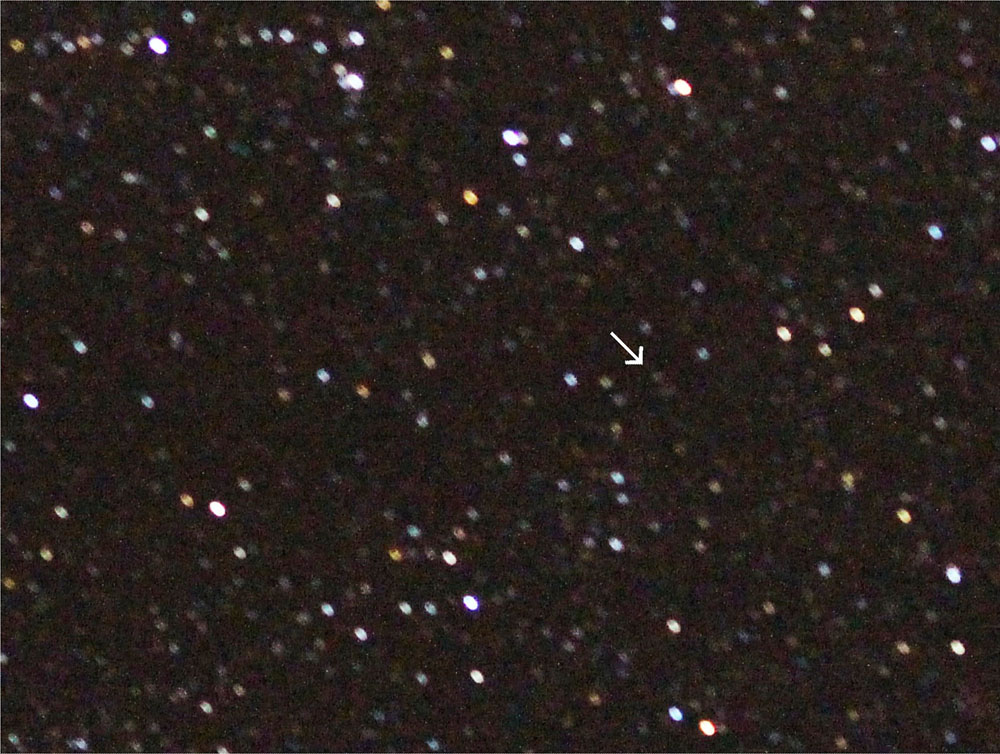
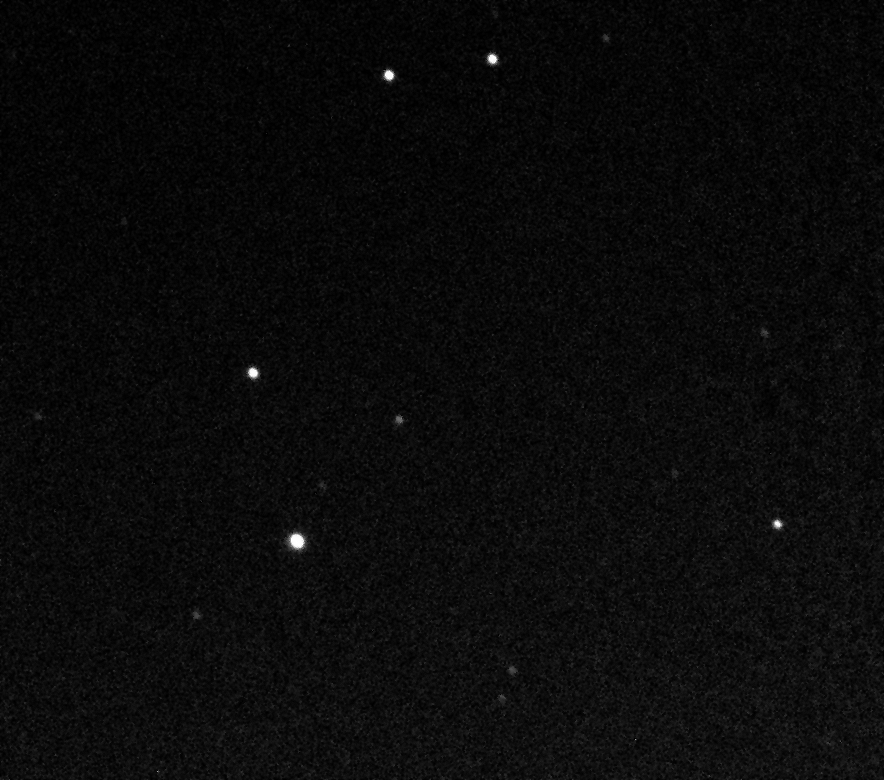
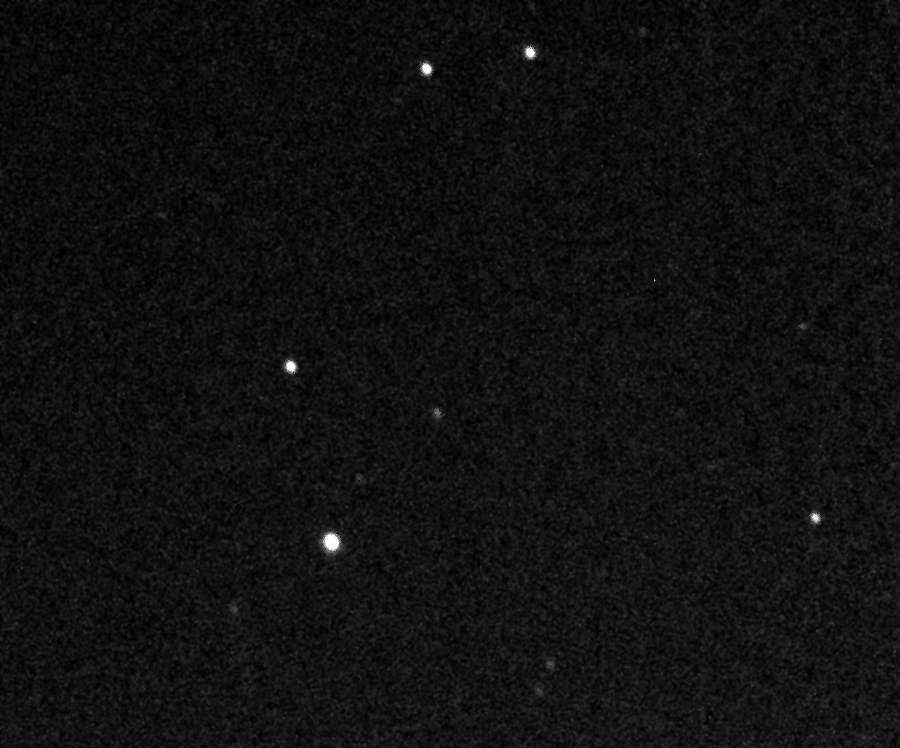
BACK to Comet Resource Center
BACK to Earthrise Institute home page